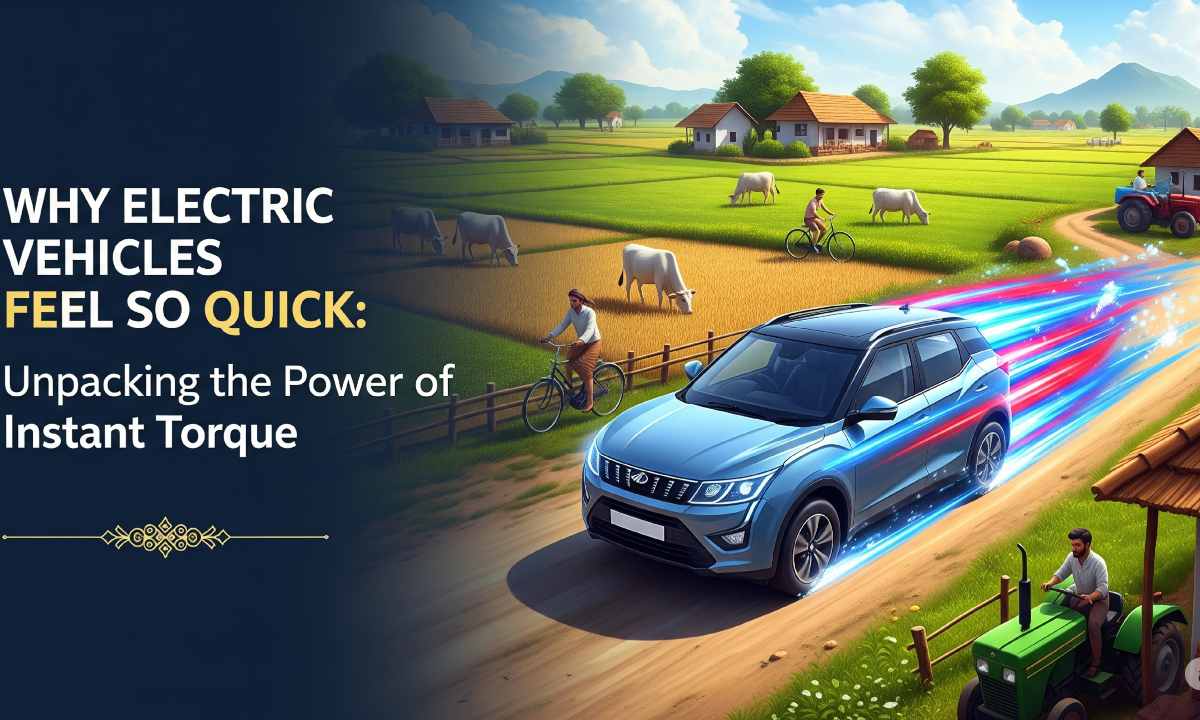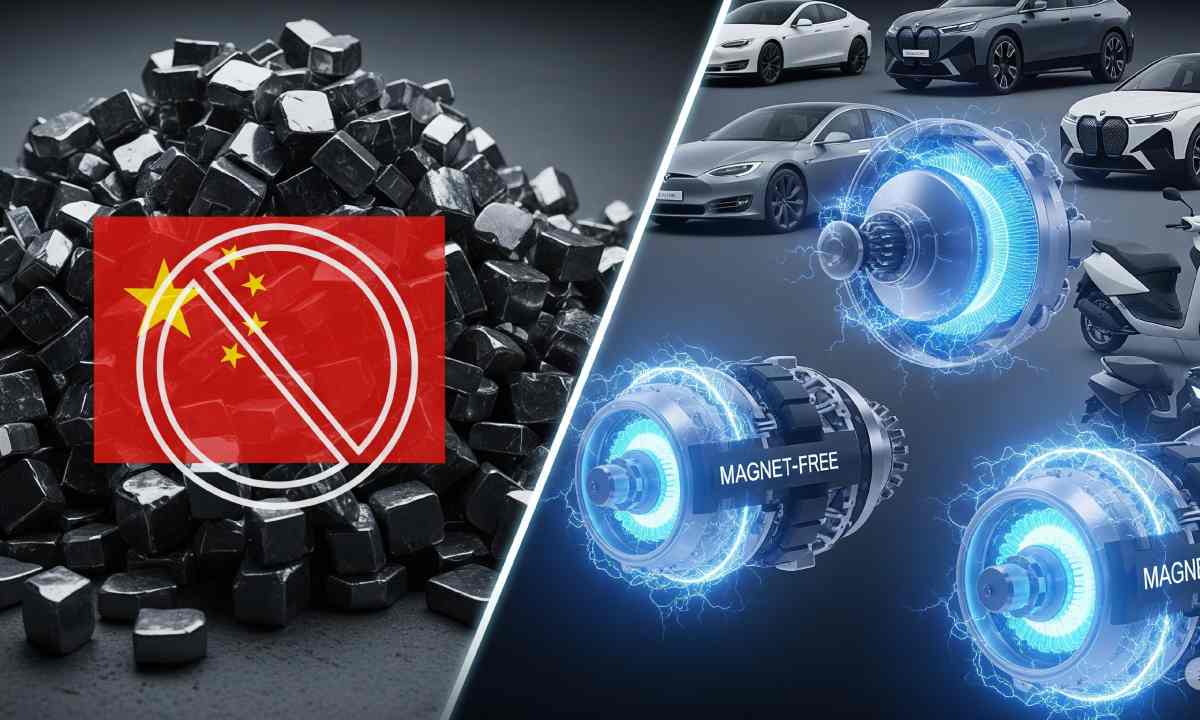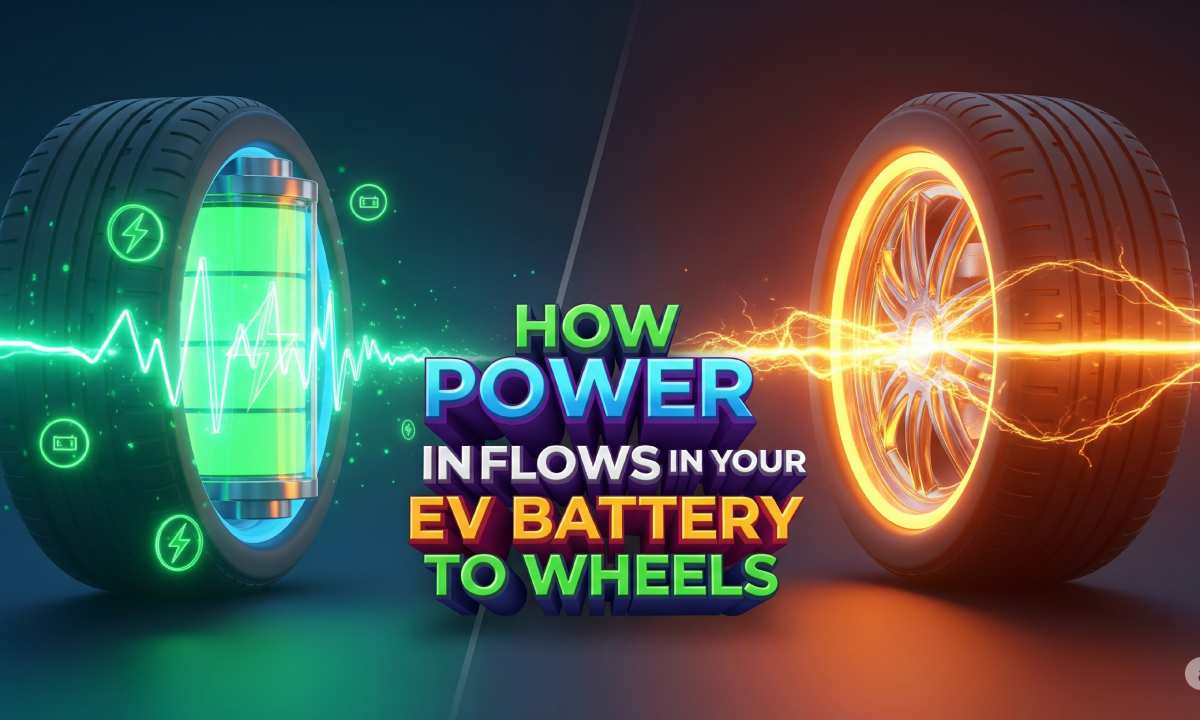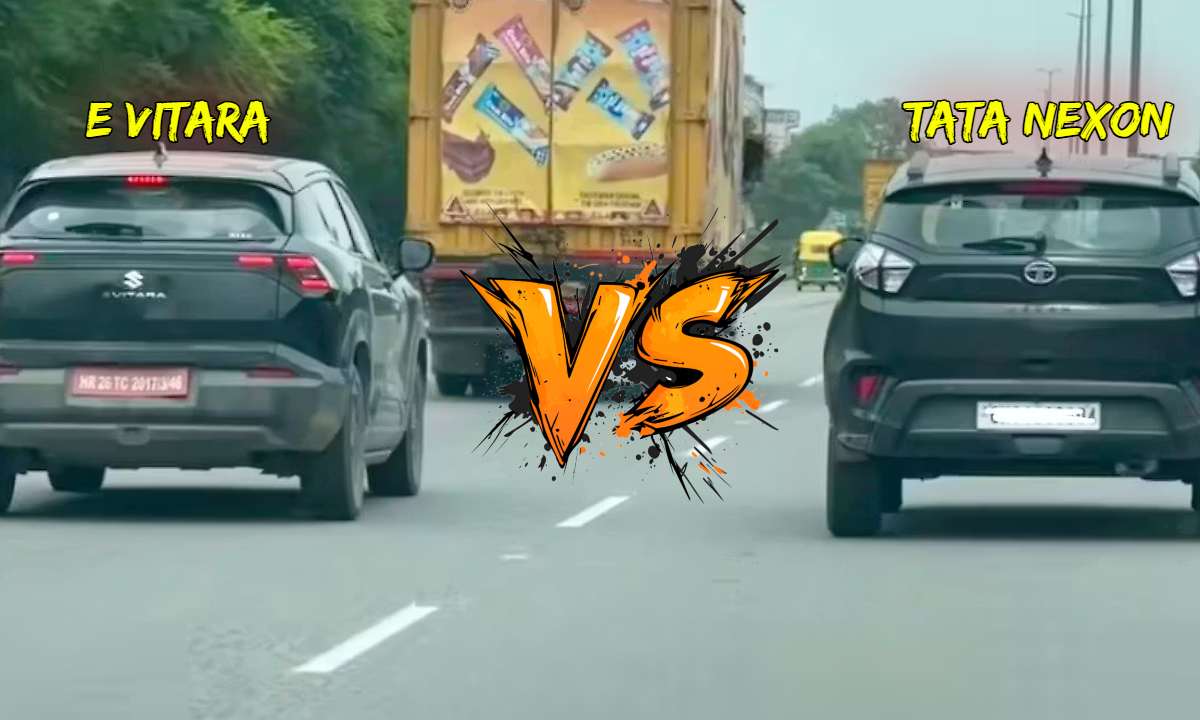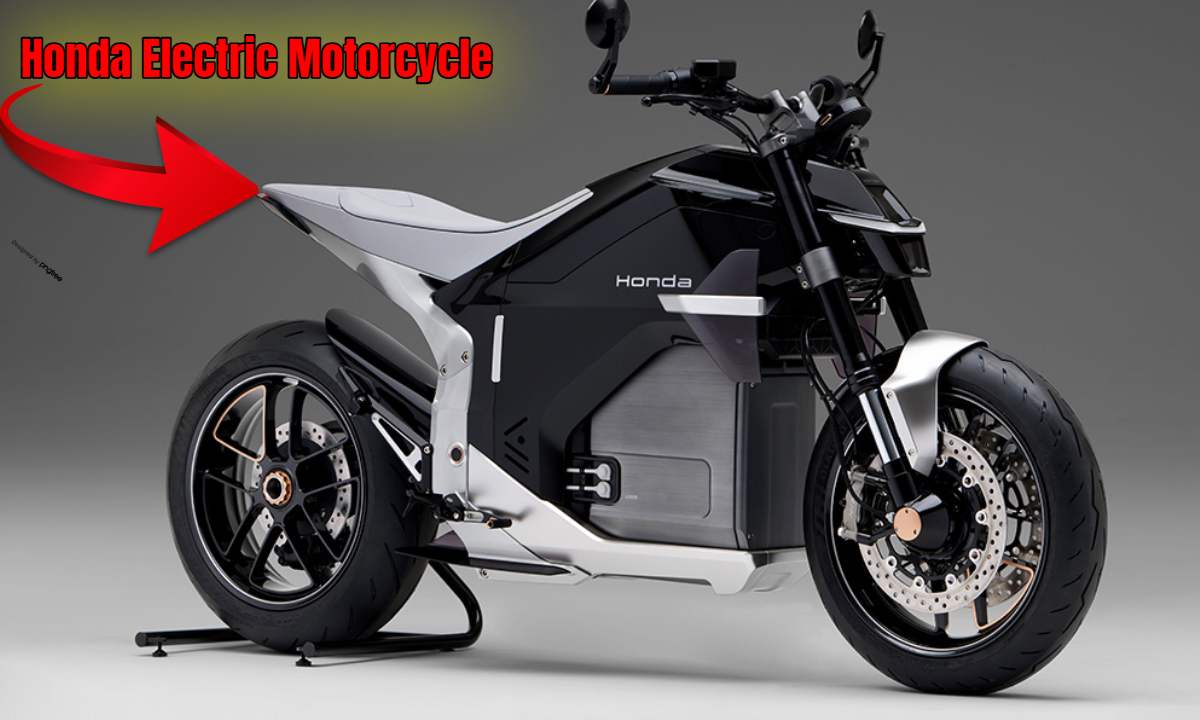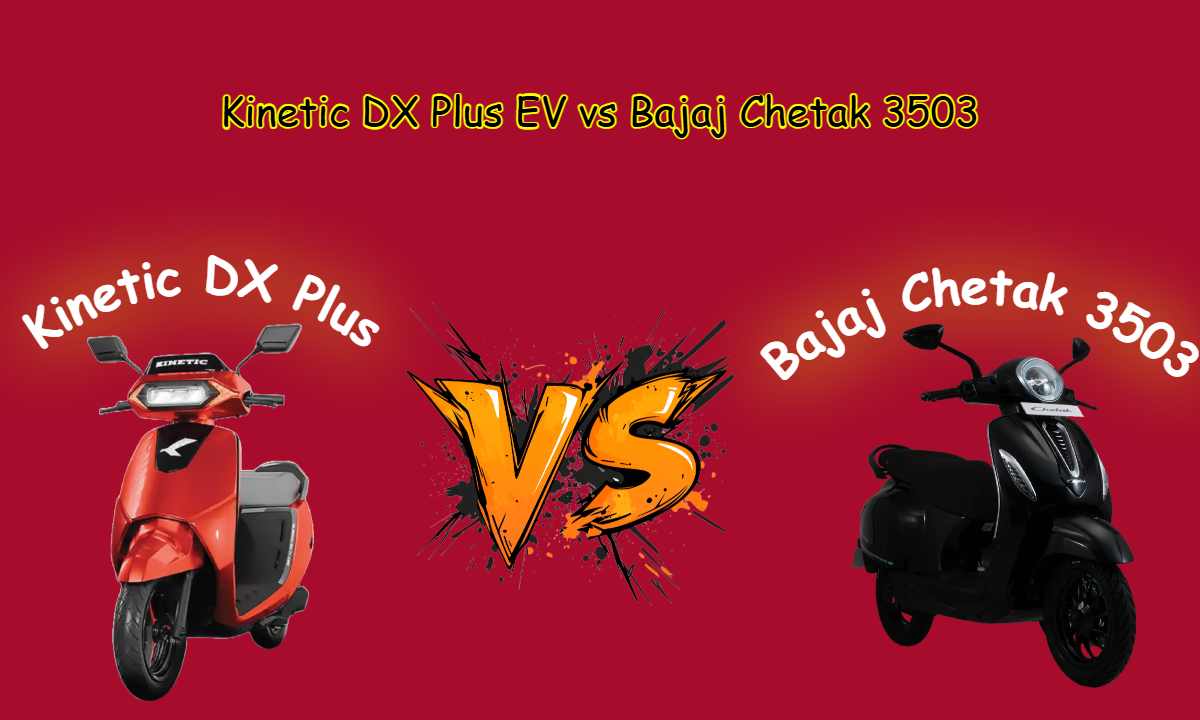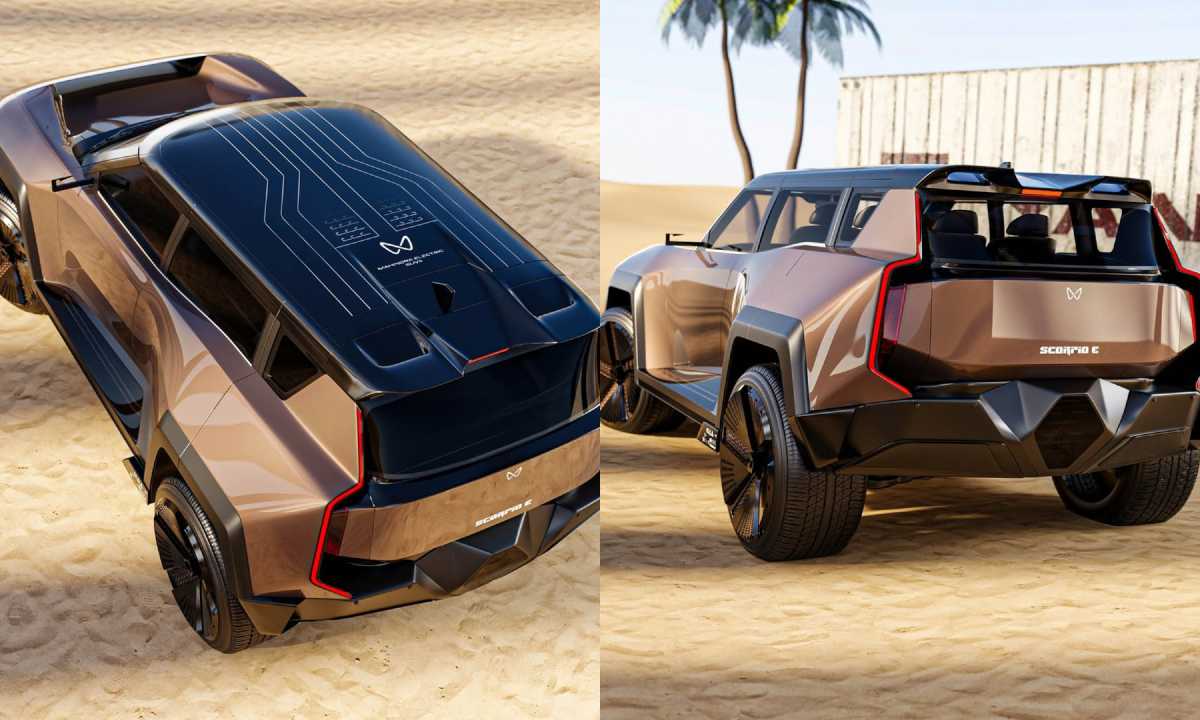Electric vehicles (EVs) have a reputation for lightning-fast acceleration, whether you’re zipping through city streets on an Ola S1 scooter or cruising in a Tata Nexon EV. That thrilling “push” you feel the moment you press the accelerator? It’s all thanks to instant torque. But what exactly makes EVs feel so much quicker than traditional petrol or diesel vehicles, even when their horsepower numbers might seem modest? Let’s break down the science behind this phenomenon in a way that’s clear, practical, and relatable—especially for Indian drivers navigating busy roads.
What Is Torque, and Why Does It Matter?
Torque is the rotational force that powers your vehicle’s wheels, giving it the ability to accelerate. In simpler terms, it’s the “muscle” that gets you moving from a standstill or helps you overtake on a highway. High torque translates to quick, responsive acceleration, which is why it’s such a critical factor in how a vehicle feels to drive.
Unlike horsepower, which determines top speed, torque is what you feel in everyday scenarios—like merging into traffic or climbing a steep hill. For Indian drivers, where roads are often congested and unpredictable, torque is what makes the difference between a sluggish ride and a confident one.
Electric Motors vs. Combustion Engines: A Torque Showdown
The secret to EVs’ quickness lies in how their electric motors deliver torque compared to traditional internal combustion engines (ICE). Here’s a clear comparison:
- Torque Delivery:
- ICE: Torque builds gradually as the engine’s RPM (revolutions per minute) increases. You need to rev the engine and shift gears to access peak performance, which introduces a slight delay.
- Electric Motor: Delivers 100% torque instantly, right from 0 RPM. The moment you press the accelerator, full power is available—no waiting required.
- Transmission:
- ICE: Relies on multi-gear transmissions to keep the engine in its optimal power band, adding complexity and slight lag during gear shifts.
- Electric Motor: Uses a single-speed transmission, eliminating gear changes for seamless, uninterrupted power delivery.
- Response Time:
- ICE: Slower due to mechanical processes like fuel combustion and gear engagement.
- Electric Motor: Near-instantaneous, as electricity flows directly to the motor, producing immediate motion.
This instant torque is why EVs feel so responsive. Whether it’s a compact electric scooter like the Ather 450X or a robust SUV like the Mahindra XUV400, the lack of delay makes every acceleration feel effortless and exhilarating.
The Science Behind Instant Torque
Electric motors operate on a fundamentally different principle than ICE engines. Here’s how they work in a nutshell:
- Electricity Flows: When you press the accelerator, the battery sends an electric current to the motor.
- Magnetic Magic: This current creates a magnetic field, which interacts with the motor’s rotor (a rotating component connected to the wheels).
- Instant Motion: The rotor spins immediately, delivering torque directly to the wheels with minimal mechanical delay.
Unlike ICE engines, which rely on a complex chain of events—fuel injection, combustion, pistons moving, and crankshaft turning—electric motors have fewer moving parts. This simplicity eliminates the need to “build up” power, making torque available the instant you need it. For example, an EV’s motor can go from standstill to peak performance in milliseconds, compared to the seconds it takes an ICE engine to reach its power band.
This efficiency is particularly noticeable in real-world driving. Imagine navigating a crowded market street in Mumbai or Chennai. With an EV like the Bajaj Chetak, you can dart through gaps in traffic with a quick twist of the throttle, thanks to the motor’s immediate response.
Why Instant Torque Makes EVs a Game-Changer
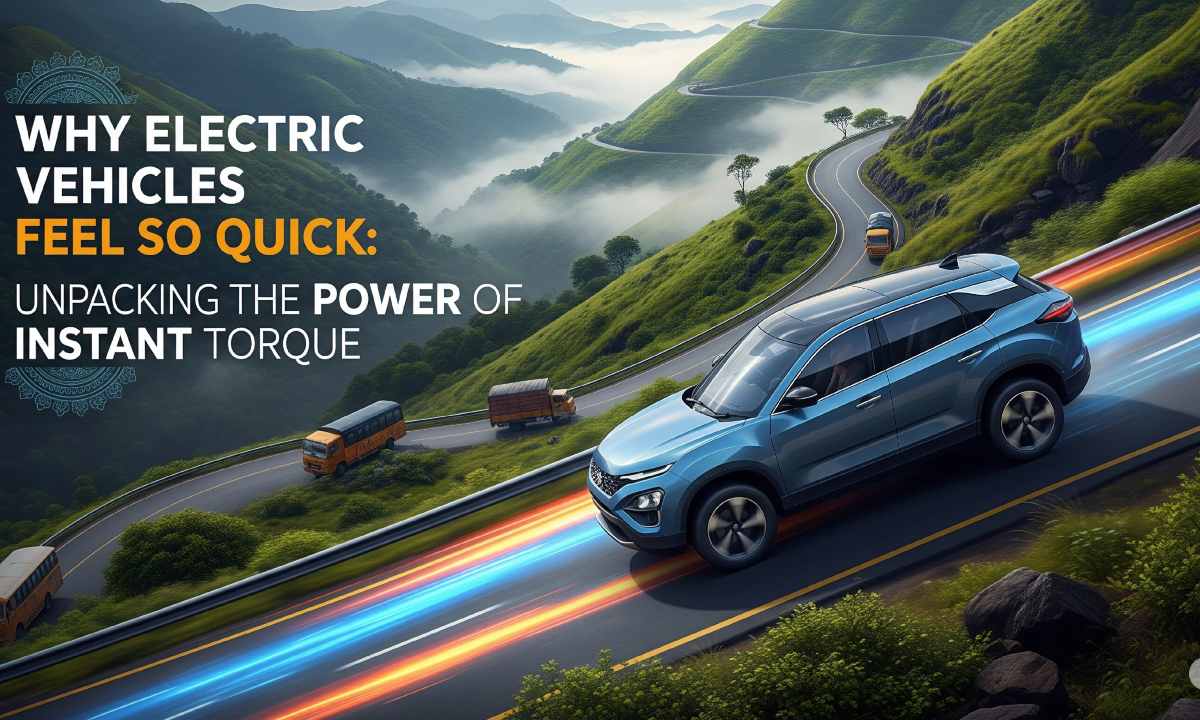
The benefits of instant torque go beyond just feeling fast—they make EVs practical and enjoyable for daily driving, especially in India’s unique road conditions. Here’s why it matters:
- Swift Overtakes: In chaotic city traffic, instant torque allows you to pass slower vehicles—like auto-rickshaws or trucks—quickly and safely. For instance, an Ola S1 Pro can accelerate faster than a petrol-powered Honda Activa in the critical 0-40 km/h range, making overtaking a breeze.
- Effortless Hill Climbs: Whether you’re tackling a steep ghat road or carrying extra passengers, EVs maintain consistent torque, ensuring smooth performance without strain.
- Thrilling Drive: The immediate response of an EV feels like a surge of power, making even routine commutes exciting. It’s like having a sports car’s responsiveness in an everyday vehicle like the Tata Nexon EV.
This instant power delivery is especially valuable in India, where quick acceleration can help you navigate unpredictable traffic, from dodging stray animals to merging onto busy highways.
Balancing Torque: The Smart Side of EVs
While instant torque is a major strength, it’s not without its nuances. Delivering too much torque too quickly can lead to wheelspin, especially in two-wheel-drive EVs or on slippery roads like those during the monsoon season. It can also drain the battery faster, reducing range. To address this, most EVs are equipped with sophisticated torque management systems. For example:
- Drive Modes: EVs like the Hyundai Ioniq 5 offer modes like Eco, Normal, and Sport. Eco mode limits torque for better efficiency, while Sport mode unleashes full power for maximum fun.
- Traction Control: Systems in vehicles like the MG ZS EV adjust torque to prevent wheelspin, ensuring stability even in challenging conditions.
These features make EVs versatile, allowing drivers to balance performance with efficiency based on their needs—whether it’s a long highway drive or a short city commute.
A Real-World Scenario
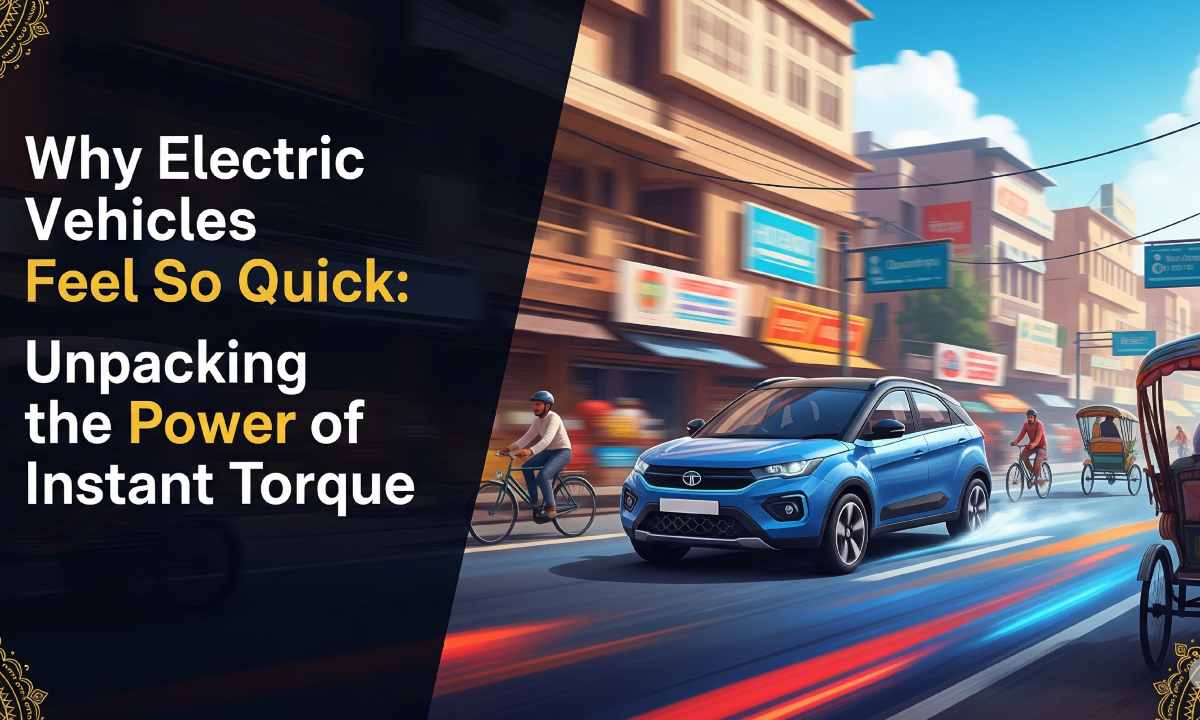
Picture this: You’re driving through Delhi’s rush-hour traffic, stuck behind a slow-moving bus. With a petrol car like a Maruti Swift, you’d need to downshift and wait for the engine to rev up before overtaking. But in a Tata Punch EV, a gentle press of the accelerator delivers instant torque, letting you glide past the bus smoothly and safely. This responsiveness isn’t just convenient—it’s a practical advantage in India’s fast-paced urban environments.
Why EVs Stand Out in India’s EV Revolution
As India embraces EVs with models like the Mahindra BE 6 and Tata Harrier EV launching in 2025, instant torque is a key reason they’re gaining popularity. It’s not just about speed—it’s about delivering a driving experience that’s smooth, responsive, and tailored to real-world needs. Whether you’re a first-time EV buyer or a seasoned driver, the instant power of an electric motor makes every journey feel effortless and exciting.
Final Thoughts: The Electric Edge
The magic of instant torque lies in its ability to make EVs feel quick, agile, and fun, even if their horsepower numbers don’t always match those of traditional vehicles. It’s a product of clever engineering—fewer moving parts, direct power delivery, and smart technology working together to create a driving experience that’s uniquely electric. So, the next time you test-drive an EV, pay attention to that immediate surge of power. It’s not just acceleration—it’s the future of driving, designed to make every trip more enjoyable.

